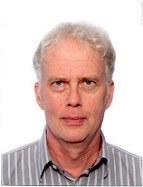Day 2 :
Keynote Forum
Jukka P. Matinlinna
The University of Hong Kong, hong Kong
Keynote: Restorative Materials Tomorrow
Time : 10:00-11:00

Biography:
Jukka P. Matinlinna is tenured professor in dental materials science at the University of Hong Kong (HKU), Faculty of Dentistry. His main field of research, in addition to undergraduate and postgraduate dental teaching and education, is dental materials with regard to adhesion, material development, adhesion promotion, and system simulations. His special focus is on contemporary and future dental biomaterials in prosthetic dentistry and implant dentistry; silane chemistry; adhesion promotion aspects; saliva chemistry; dentin bonding; resin bonding to zirconia and porcelain, Ti and Ti alloys; experimental primers and resins; E-glass fiber–reinforced composite (FRC) restorations; and finite element analysis (FEA). Since 2004 he has contributed to more than 160 peer-reviewed indexed publications, 40 professional journal publications, 25 book chapters, 170 conference and symposium abstracts, and 85 invited/keynote lectures. Professor Matinlinna has acted as guest editor and is a member of editorial boards of several dental journals. In 2015 he was awarded HKU Faculty Outstanding Teacher Award, Faculty of Dentistry.
Abstract:
We are using restorative dental materials to restore or help in restoring missing, diseased, and traumatized teeth, tooth structures and tissues. Dental materials and, in general, biomaterials have been initialized and developed at dental schools. Dentists are the only authorized end users of dental biomaterials. Novel, innovative emerging dental materials are at the front position of new technologies in dentistry. Dentistry has been moving rapidly toward adhesive and noninvasive direction, the so-called conservative dentistry. Dental materials science is an integral, multidisciplinary domain in dental sciences. Materials in dentistry are predominantly synthetic, such as resin composites, silver amalgam, dental cements etc. Restorative dental materials can be classified according to the principles of direct application as a) direct restorative materials and b) indirect restorative materials. Direct restorative materials such as resin composites, silver dental amalgam, and glass ionomer cements are used directly inside the oral cavity to restore the function of teeth. Some of them are aesthetic. Indirect restorative materials, such as porcelain fused to metal (PFM), high content gold alloys, non-precious metal alloys, and indirect resin composites are prepared in a dental laboratory. But are the current dental materials already optimal and can they serve well and long enough? What different type of dental materials do we have in clinical use today? What is so special in the materials one is using in dentistry? To which direction are dental materials going? Do we have adhesive dentistry also in the future? How about 3D printing and dentistry? These are some of the questions this talk is addressing. The chemical and physical properties of restorative materials are also covered in a concise but clinically exciting and comprehensive way. Basic concepts of e.g., adhesion and bonding of dental restorative materials are also introduced.
- Endodontics | Dental Research | Clinical and Experimental Dentistry

Chair
Jukka P Matinlinna
The University of Hong Kong, Hong Kong

Biography:
Abstract:
Wan Zaripah Wan Bakar
Universiti Sains Malaysia, Malaysia
Title: Interractive lecture and the acceptance level among lecturers in PPSG, USM, Malaysia

Biography:
Abstract:
Yassir Elkhidir
Suiwah Stomatological Hospital, China
Title: Ultraviolet Photofunctionalization for Speed Osseointegration

Biography:
Abstract:
Aditi Jain
Ayush University of Medical Science, India
Title: Antibacterial efficacy of neem, triphala, green tea and combination of neem with triphala extract against Enterococcus faecalis: An in vitro study

Biography:
Abstract:
Sanjeev Kunhappan
Government Dental College, India
Title: Taming the “LEO†(Lesion of Endodontic Origin)

